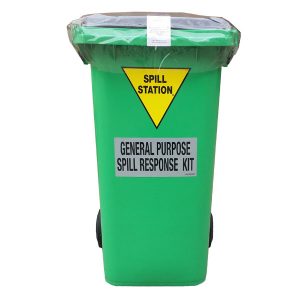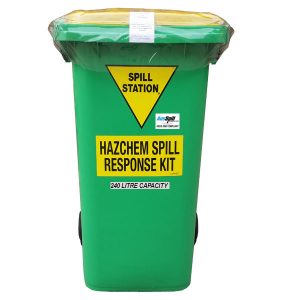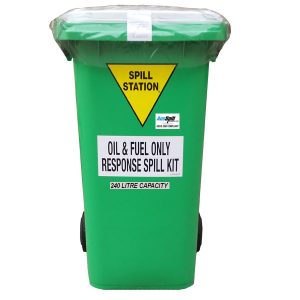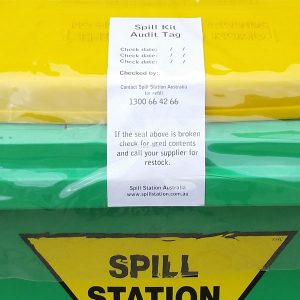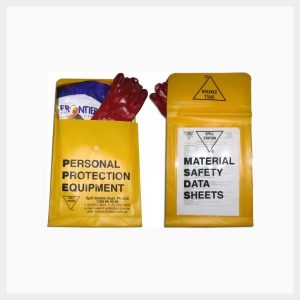Australian spill control industry association, AusSpill, publishes voluntary product quality guidelines for industry participants. These guidelines set out appearance, labeling, packaging and performance parameters for spill kits. Spill kits in this range, manufactured and sold by, Spill Station Australia, comply with these guidelines.
All absorbents in this range have had independent 3rd party laboratory testing to BS7959-1 in order to guarantee sorbent performance.
All spill kits in this range are fully compliant with the AusSpill quality guidelines Spill Kits . This is not an Australian Standard.
After a long period of research and working closely with mobile bin manufacturers, it was determined that lime greens bins are not currently being used for any purpose in Australia. This presented an opportunity to the spill control industry to have a unique colour so that users can quickly differentiate a spill kit from a refuse bin. The requirement for a lime green bin body is covered in Section 5 of AusSpill quality guidelines for Spill Kits.
Section 5 goes on the state the requirement for identifying the different types of spill kits through the use of colour coded lids. White lid for Oil Only, grey for General Purpose and yellow for Hazchem.
Section 6 of AusSpill quality guidelines for spill kits set out the terminology to be used to describe the application of a spill kit. It is broken down into 3 categories; General Purpose, Hazchem and Oil & Fuel Only.
Minimum font size of identifying labels is covered in section 7 of the AusSpill Quality Guidelines. It states that the primary spill kit descriptors must be in clear 50mm high capitals against a contrasting background.
One of the most important aspects of the AusSpill Quality Guidelines is the requirement that all sorbent components of a spill kit are submitted to an independent AusSpill approved laboratory to test sorbents to BS7959-1, “Materials used for the control of liquid spillages, Determination of Sorbency”.
Because of the lack of regulation in the area of spill response and control, many operators have not conducted independent laboratory test to determine the sorbent capacity of their spill response kits. This makes it difficult for consumers to be able to compare different brands of spill kits. This lack of transparency also put spill kit users in the position of not being able to address a chemical spill effectively. Failure to clean up chemical spill can lead to significant fines from both environment and safety regulators.
This testing regime that now applies to all spill kits bearing the AusSpill quality mark of compliance gives users the confidence that the spill kit will perform as required.
It is hoped these quality guidelines are a precursor to the development of an Australian Standard to further regulate spill response and control equipment. AusSpill already has written stakeholder support from environment and safety regulators around Australia and New Zealand, AFAC and relevant industry associations.

